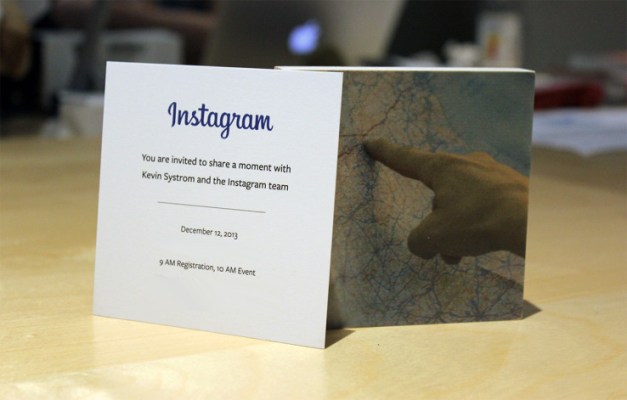Instagram is preparing to launch a new messaging service on its platform this year — as soon as its event this Thursday — TechCrunch has heard from a variety of sources. This isn’t too shocking, as Om Malik reported in a piece last month that the service would be coming very soon.
What we’ve also heard, however, from a few sources, is a very interesting rumor: Instagram’s messaging feature will feature messages that will disappear over time.
We haven’t been able to get a solid confirmation of this one so let’s call a spade a spade — this is conjecture. Hence the headline with a question mark up there. But, since we’re here, let’s talk it out.
From what we understand of the messaging feature, it will be a part of the main app but may not be dedicated to a separate section on the tab bar. This leads us to believe that it will be an offshoot of the profile section of the app, similar to how Twitter’s previous app handled DMs, though yesterday’s update places messages right in the tab bar.
It’s also possible that Facebook has sent over some of its ‘Poke’ messaging vibes along with Facebook Chat Groups and Messenger director Peter Deng back in August. Deng moved to Instagram in August, when Instagram founder Kevin Systrom said that “his experience building out Facebook News Feed and Messenger make him the perfect fit for our company.”
Deng told TechCrunch at the time that “Mark [Zuckerberg] wanted to make the world more open and connected. We want to capture and share the world’s moments. It’s a beautiful mission.”
The messages are text-based, with a fairly straightforward interface reminiscent of any other chat app. We don’t know if images or video will be an option but it would be hard to imagine why they wouldn’t be. TC’s Josh Constine has talked before about how a private channel might be good for Instagram. And the service as a whole has been making an effort to facilitate people’s use of it as a messaging platform — this would be a natural continuation of that path.
Obviously an Instagram ephemeral messaging system, if what we hear is accurate, would be an effort to play into the arena that is currently being dominated by Snapchat. And everywhere you go, people really want to know what other people think about Snapchat (especially teenz!).
Going along with this is Instagram’s use of the word ‘moments’ in its invitation sent out to press. Sharing a moment has been a guiding statement for the company for a while now, but was emphasized yet again at its recent launch of video features on the service.
Sending a message that will be available to view for a limited time is absolutely a way to communicate that concept. You’re sharing a ‘moment’ with someone, and that moment will then be gone. Humans often forget the exact contents of a conversation in a short period of time. We’re left with an impression of what was said, but not the exact letter-by-letter or photographic transcription thereof. Having messages last for a brief period and then flutter off into nothingness might actually be a better way to go, more representative of real life, than having that all on permanent record for eternity.
Though a lot of the discussion surrounding ‘limited time’ messaging has focused on Teens™, there is a possibility that messaging on the whole could benefit from considering this outlook. Is permanence important in text messages and casual conversations? Or is it something that just “happened” to us as our conversations moved from voice chats on the phone to text messages and IM?
Moving to text-based, computer-facilitated messaging allowed us to easily keep those messages for easy reference. This can be handy in business communications, for reference and more. But is it really necessary for us to index the angry argument we had with our spouse a week ago? One we’ve already reconciled over?
Instagram’s messaging section, which we’ll see shown off Thursday, could be a plain Jane non-disappearing-act affair. But if it, too, taps into this ephemeral messaging trend, we could be seeing the continuation of a much-needed re-thinking process about how we use the Internet to talk to each other.
Additional reporting by Josh Constine and Kim-Mai Cutler
